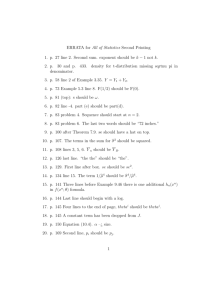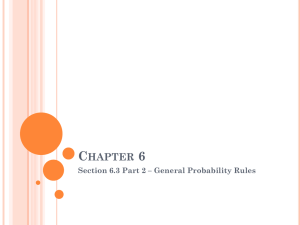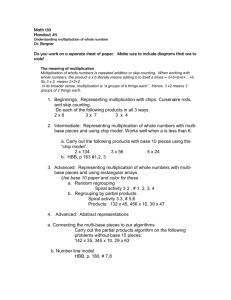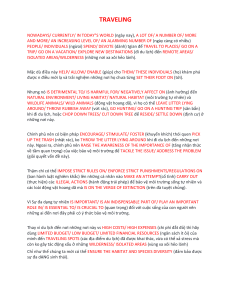-1 - MiNI PW
advertisement
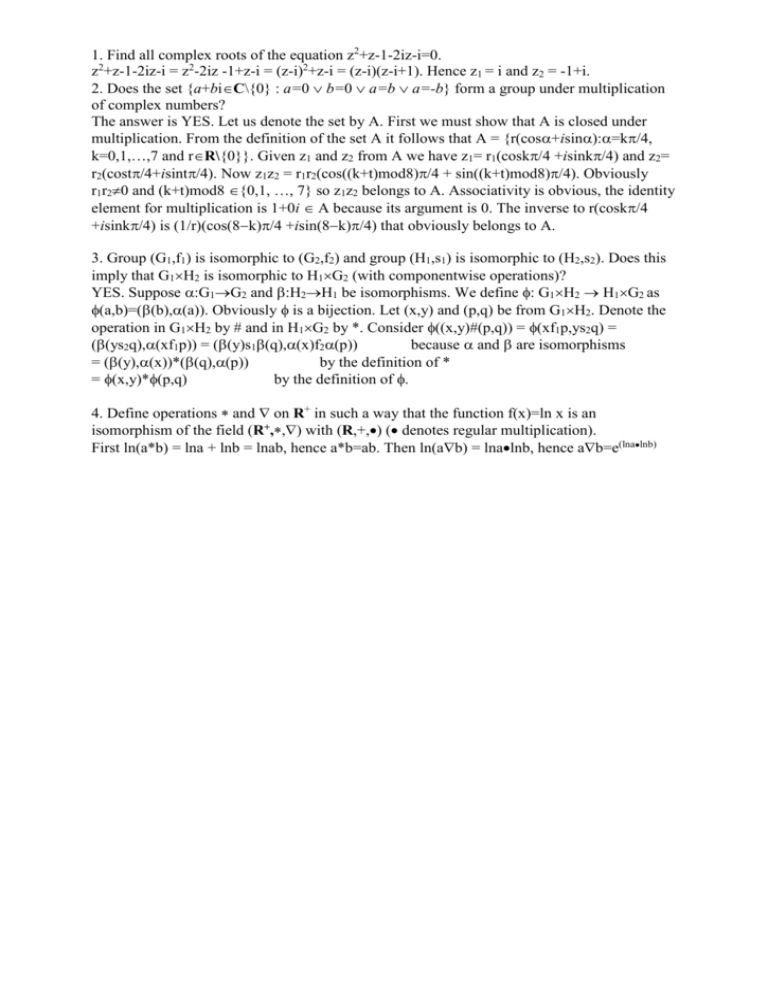
1. Find all complex roots of the equation z2+z-1-2iz-i=0.
z2+z-1-2iz-i = z2-2iz -1+z-i = (z-i)2+z-i = (z-i)(z-i+1). Hence z1 = i and z2 = -1+i.
2. Does the set {a+biC\{0} : a=0 b=0 a=b a=-b} form a group under multiplication
of complex numbers?
The answer is YES. Let us denote the set by A. First we must show that A is closed under
multiplication. From the definition of the set A it follows that A = {r(cos+isin):=k/4,
k=0,1,…,7 and rR\{0}}. Given z1 and z2 from A we have z1= r1(cosk/4 +isink/4) and z2=
r2(cost/4+isint/4). Now z1z2 = r1r2(cos((k+t)mod8)/4 + sin((k+t)mod8)/4). Obviously
r1r20 and (k+t)mod8 {0,1, …, 7} so z1z2 belongs to A. Associativity is obvious, the identity
element for multiplication is 1+0i A because its argument is 0. The inverse to r(cosk/4
+isink/4) is (1/r)(cos(8k)/4 +isin(8k)/4) that obviously belongs to A.
3. Group (G1,f1) is isomorphic to (G2,f2) and group (H1,s1) is isomorphic to (H2,s2). Does this
imply that G1H2 is isomorphic to H1G2 (with componentwise operations)?
YES. Suppose :G1G2 and :H2H1 be isomorphisms. We define : G1H2 H1G2 as
(a,b)=((b),(a)). Obviously is a bijection. Let (x,y) and (p,q) be from G1H2. Denote the
operation in G1H2 by # and in H1G2 by *. Consider ((x,y)#(p,q)) = (xf1p,ys2q) =
((ys2q),(xf1p)) = ((y)s1(q),(x)f2(p))
because and are isomorphisms
= ((y),(x))*((q),(p))
by the definition of *
= (x,y)*(p,q)
by the definition of .
4. Define operations and on R+ in such a way that the function f(x)=ln x is an
isomorphism of the field (R+,,) with (R,+,) ( denotes regular multiplication).
First ln(a*b) = lna + lnb = lnab, hence a*b=ab. Then ln(ab) = lnalnb, hence ab=e(lnalnb)
